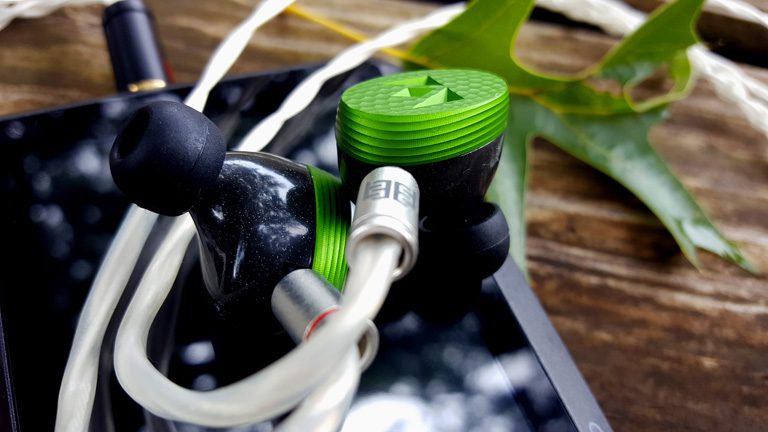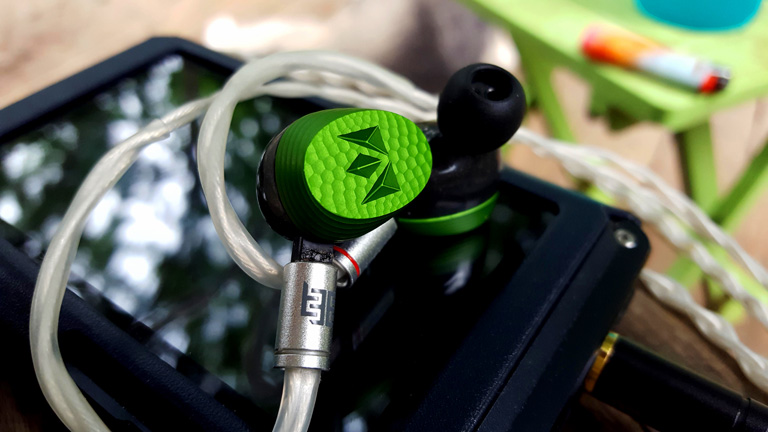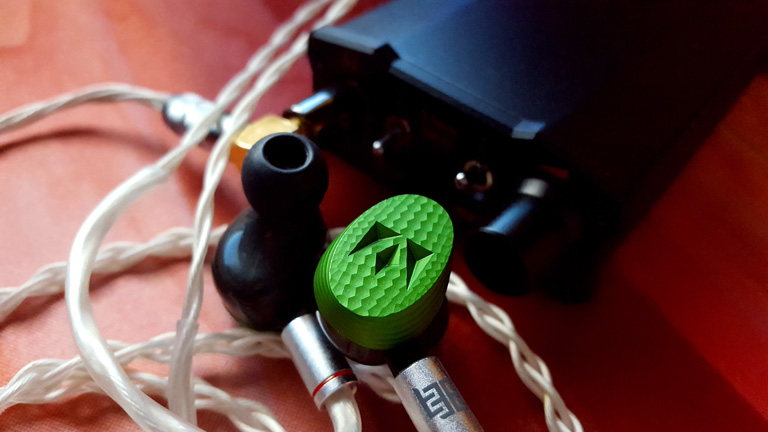
The Noble Audio Sage is a two Balanced Armature IEM tuned for easy listening. It’s not trying to impress you with unparalleled technical proficiency. It’s not Encore-light. Sage is about warmth, satiny smoothness, and air. Its strength lies in how well it balances those things.
Starting with the treble, you find highs are well under control. Perhaps too under control. Yes, there exists some sparkle, and enough energy to add a good sense of air, but they fail to reach those breathtaking heights you may want for classical music. Listening to my DSD copy of Salvatore Accardo – Antonio Vivaldi Le Quattro Stagioni, and the violins, while very warm and rich, don’t cut you when they reach those highest octaves. And they should. A violin is a weapon of the ancient world, and ought to be capable of drawing blood. Encore sure knows how to render those strings. Sage on the other hand is all about pleasant listening. Everything sounds sweet and easy on the ears. It would never allow things to get too realistic for you. This is an escapist’s IEM. It draws you into a fairytale where everything turns out okay. It’s hard not to love it for that.

My favorite test for bass is Black Sabbath’s first album, Black Sabbath, song 1, Black Sabbath. The bass is everything! If a monitor can’t do justice to those lows, it’s failed.
Sage handles them surprisingly well. The bass is huge and expansive. For a 2-BA IEM, I was not expecting this. Sage reaches into delightful sub-bass, with great impact and rumble. It has a very organic, textured quality. The timbre is spot on. Decay is a bit slow, giving the lows a more natural flavor, compared to the usual BA brevity. On the website Noble talks vaguely about their proprietary vented port for the bass driver. I don’t know how it works, but I believe it does. Sage’s low-end sounds unique, in the best way.
The vocals show us that excellent balance I spoke of. For no matter how much bass is present on the track, the singer is always clearly heard. Sage’s mids are quite warm, with a sort of lush, wooly nature. To my ears, they are rather neutral, if not slightly forward, with great note thickness and size. They aren’t the best at details. Neither is transparency a prime discipline. For emotional engagement, however, Sage hits hard. Whatever slight veil may hang over the vocals disappears after a few minutes of listening, and the heart of the artist grips you. Again, a very easy, engaging sound, one you can lose yourself in for hours at a time.

Soundstage is one of Sage’s greatest traits. It’s wonderfully wide, with decent height and depth, creating an effortless portrayal of the music. Imaging is quite accurate, but not terribly sharp. Due to mediocre resolution, there’s a slight haziness around the edges of everything. Yet the width is great enough that there is fantastic separation between elements.
At $799, Campfire Audio Jupiter is not a bad comparison. They’re both tuned for warmth, but Jupiter does a lot more with its treble. That TAEC design allows those highs to really resonate and shimmer. There’s more light on the stage, but I feel Sage has about the same amount of air.
Jupiter’s mids are smaller, but clearer, and more detailed. There is greater transparency. Sage is warmer, thicker, and smoother. I also feel with Sage the vocals are never overshadowed by anything. Whereas with Jupiter, sometimes it’s the treble, sometimes it’s the bass, but the vocals do struggle to keep your attention.
Jupiter does very well with bass, but it doesn’t have that same chasmal presence Sage delivers. It’s faster and more controlled, however. Jupiter strikes more acutely, but Sage feels more organic. They both do well with texture. Sage achieves a nicer tone, though.
Soundstage width goes to Sage by a hair. Height and depth goes to Jupiter. Resolution and transparency are both higher on Jupiter. Both IEMs do a fantastic job with imaging and separation. At the end of the day, Sage sounds more natural and realistic, while Jupiter sounds kind of fantastical, and maybe a little unnatural in comparison.
Moving on over to Spartan by Empire Ears, and I am wowed by how clear and transparent it sounds. It’s significantly more so than Jupiter, and leaves Sage in the dust. The treble has better extension than Sage and sparkles more. But not like Jupiter, which can sound a little artificial in the way it portrays those very high notes. Spartan does it in the most natural of ways, infusing the stage with superior light and air.
Spartan’s vocals have more in common with Jupiter than Sage. Sage is by far warmer than either of them. Spartan is cleaner, and very detailed. The vocals are neutral on the stage, with average size and weight. Unlike Sage, Spartan is not lush or veiled. They are some of the most transparent I’ve ever heard. Empire Ears renders a sharper, more vivid mid-range.
Bass is not as full or as organic as found in Sage. Spartan is a very neutral IEM, and in order to create this level of clarity, deals mostly with sub-bass, opting for very little mid-bass. Sage loves all bass, and uses a lot of it. Spartan’s low-end is tighter and more controlled, but Sage seems to go deeper, and resonates in a more natural way. Sage wins out on tonality, Spartan feeling a little cool for my tastes.
The width of Spartan’s soundstage is very nice, but I feel Sage may be slightly wider. Yet Spartan has far better depth, with TOTL layering. I also think Spartan is taller. Imaging is superb, and separation beats Sage and Jupiter. Resolution is also incredibly high and gives Jupiter a run for its money, once again leaving Sage behind.
I’d thought to compare Sage to Encore, but really, they are very different IEMs. Sage is tuned for warmth and smoothness, while Encore is all about clarity, detail, and transparency. Apart from bass, which I think Sage does better, Encore is in a whole other league, defeating the smaller Noble in every conceivable way. And yet, if you prefer the warmer tuning, you may like Sage better. That’s just how different they are. For my full impressions on Encore, see my review.




8 Responses
Hi Pinky! Where can I buy the 26awg OCC Silver-Plated Copper Litz cable? Is it a DIY?
Or do you recommend pairing the sage with Effect Audio Thor ii?
Nice review. Hows sage compare to savanna
Soon enough. I have to do the DK3001 first.
Spartan review coming soon ?
My Lord Sinister,
Thank you for the kind words.
Nic invited me, and then a month or so later, Ryan, to write for THL. He simply wanted us to do our thing. Be ourselves. That has helped keep my inspiration fresh, and I’m sure Ryan feels the same. I think you’ll see a continuation of this content-flow for a while to come. If the review samples keep pouring in. he he.
Hope you keep reading. 🙂
Pinky,
Your reviews are outstanding and a great treat to read. Truly appreciate you sharing!
It should also be noted that for a very long time I was getting worried with the lack of reviews as I’ve been a follower of |joker| for what seems like decades now and would frequently check for updates. So far this year the frequency of reviews have been increasing, especially over the recent months and it is exciting to see. I know it must be freakishly time consuming for the Pinky, Ryan and Flinkenick so thank you very much!
Lord Sinister
No promises. 😉
Great review Pinky!
Is there any chance for a Noble Audio Trident review?